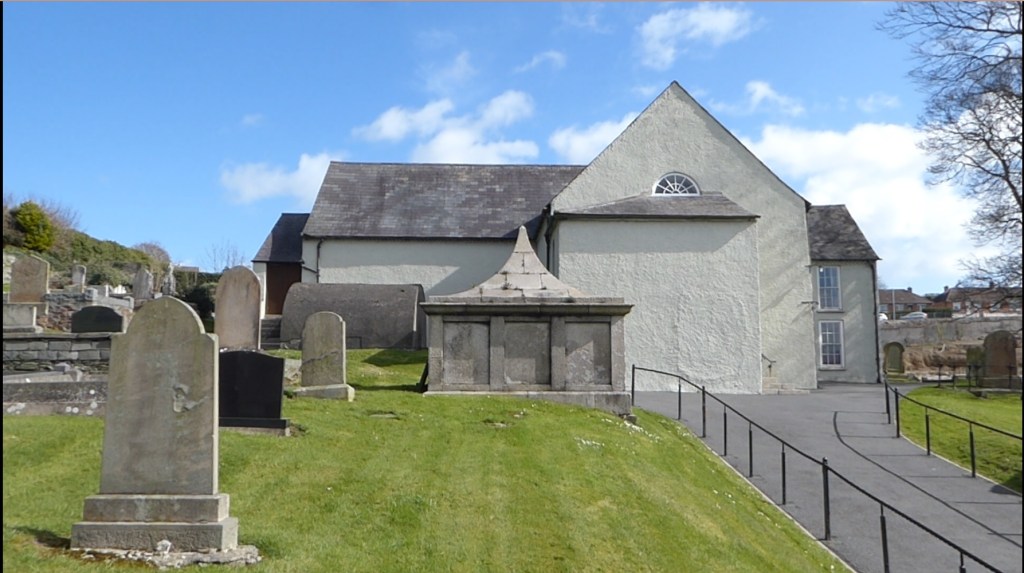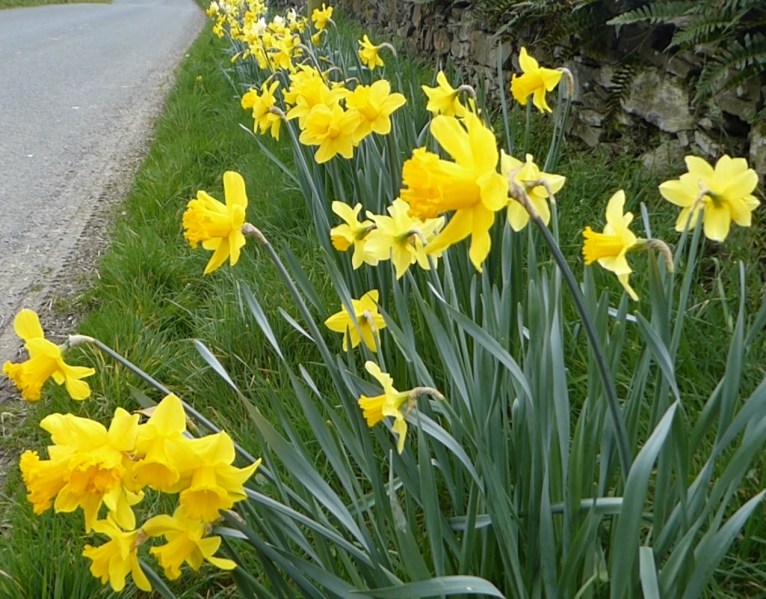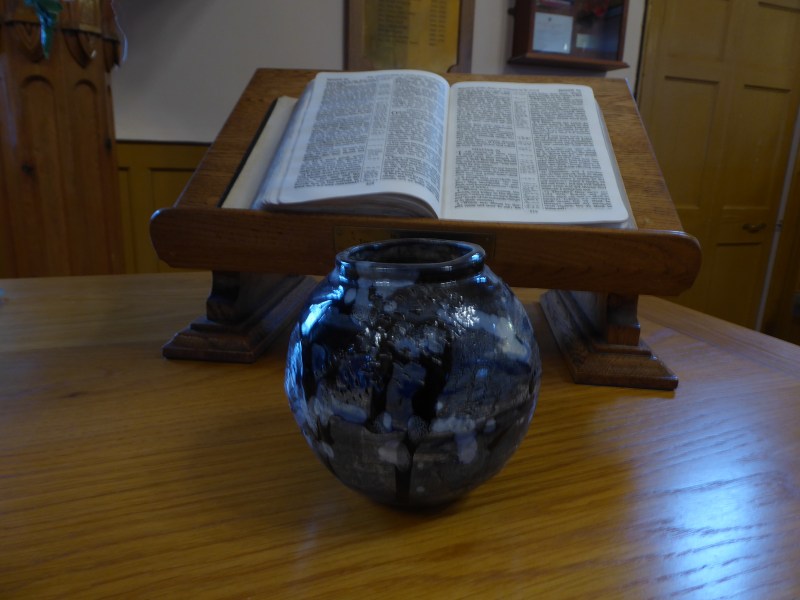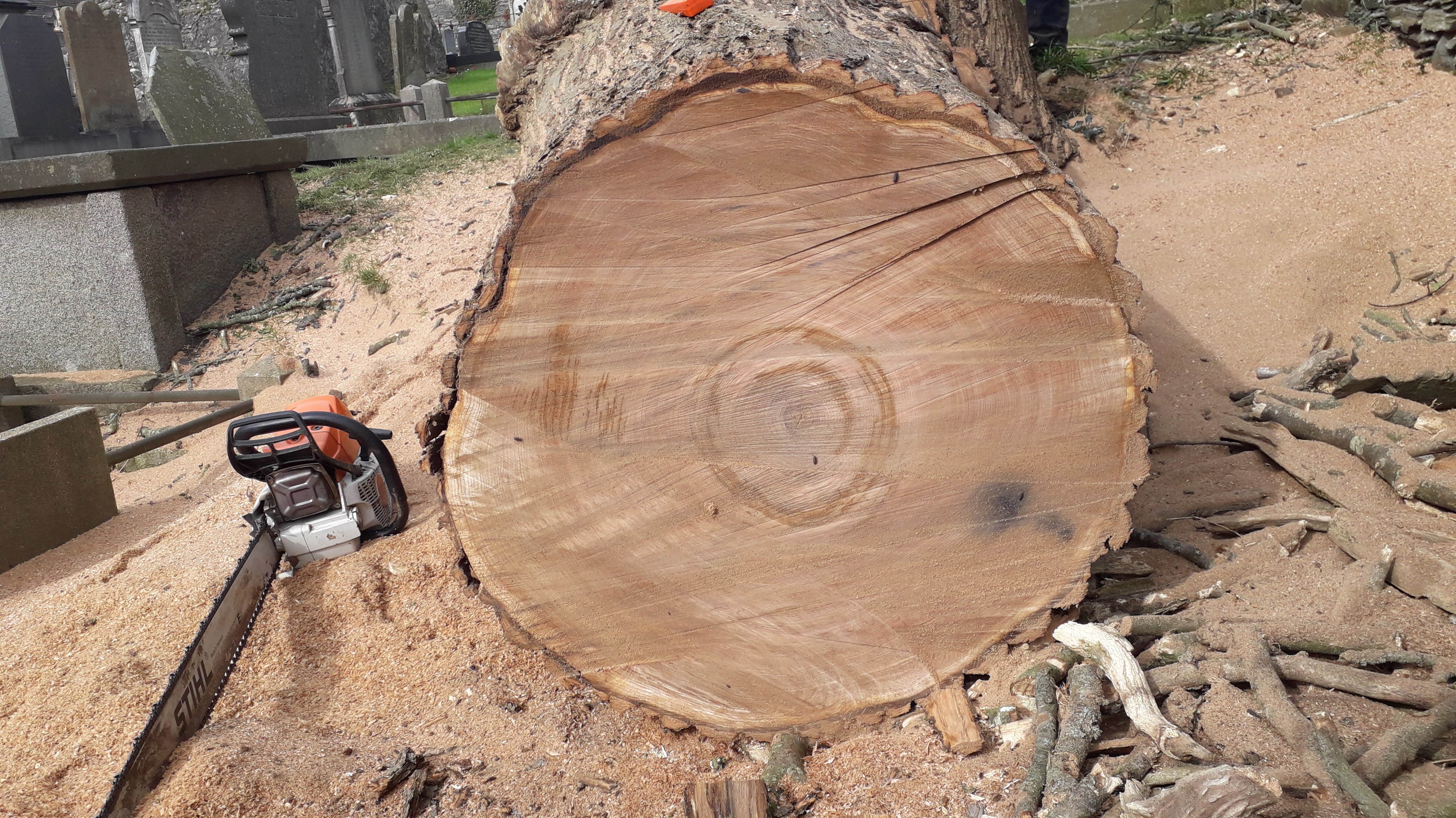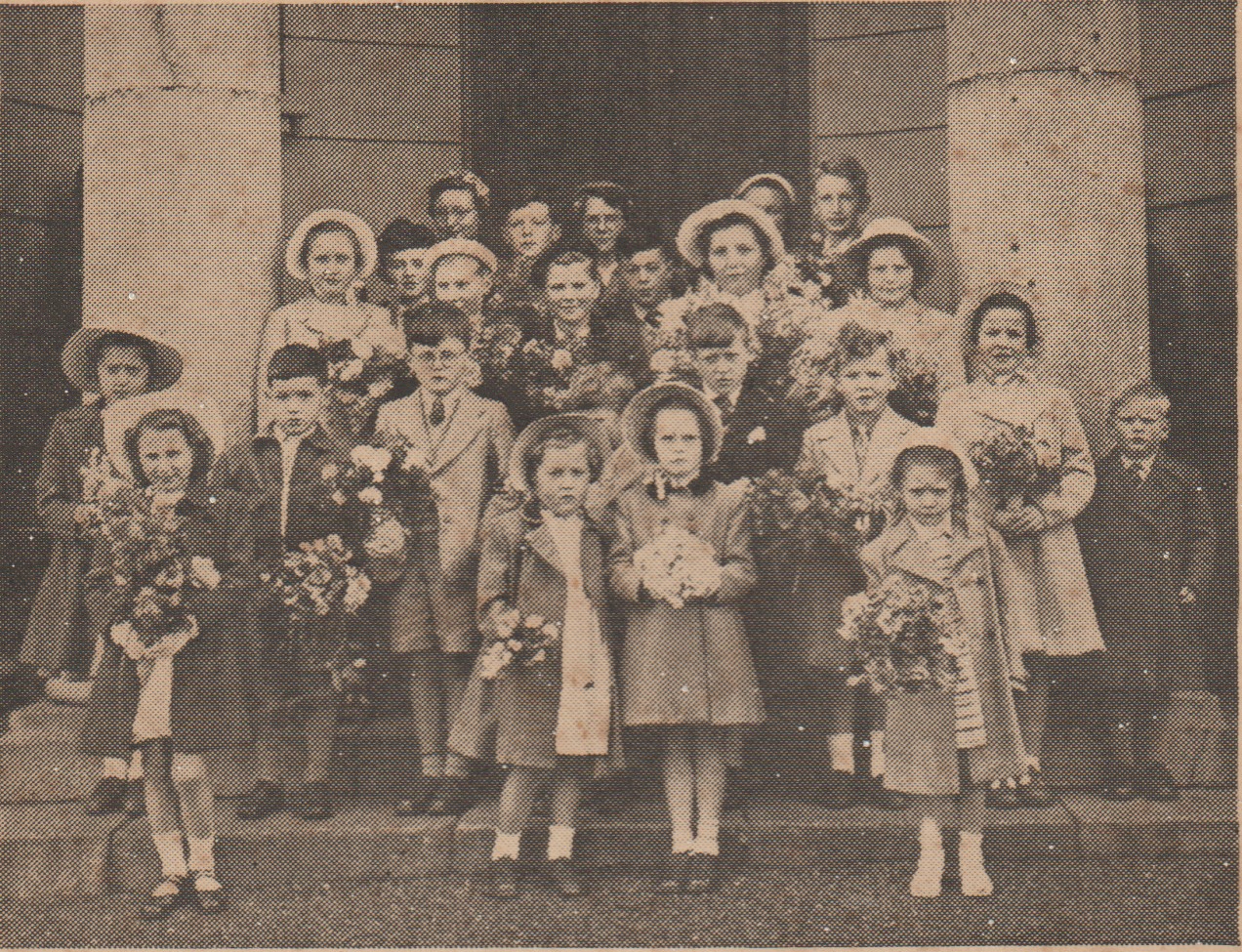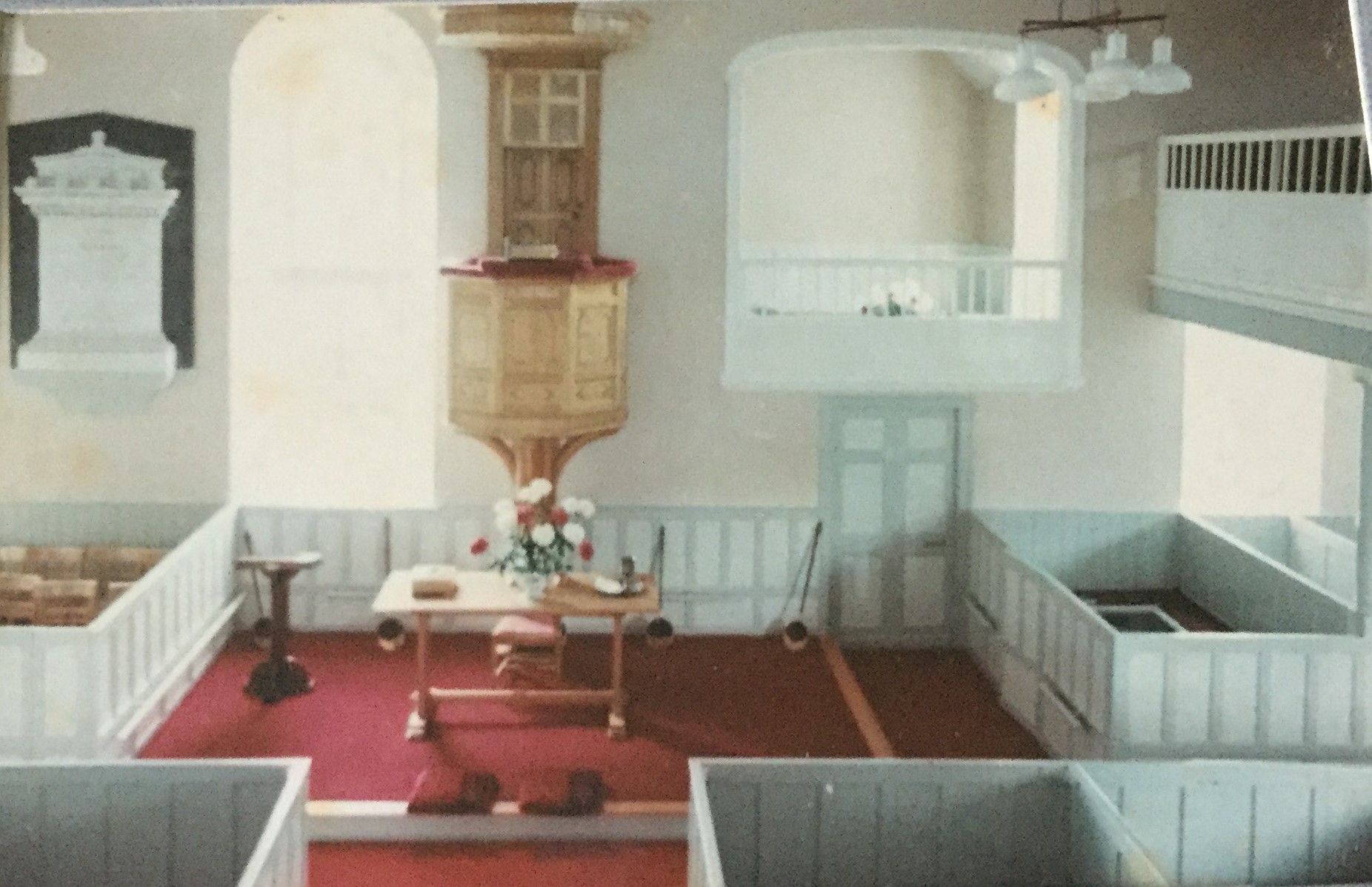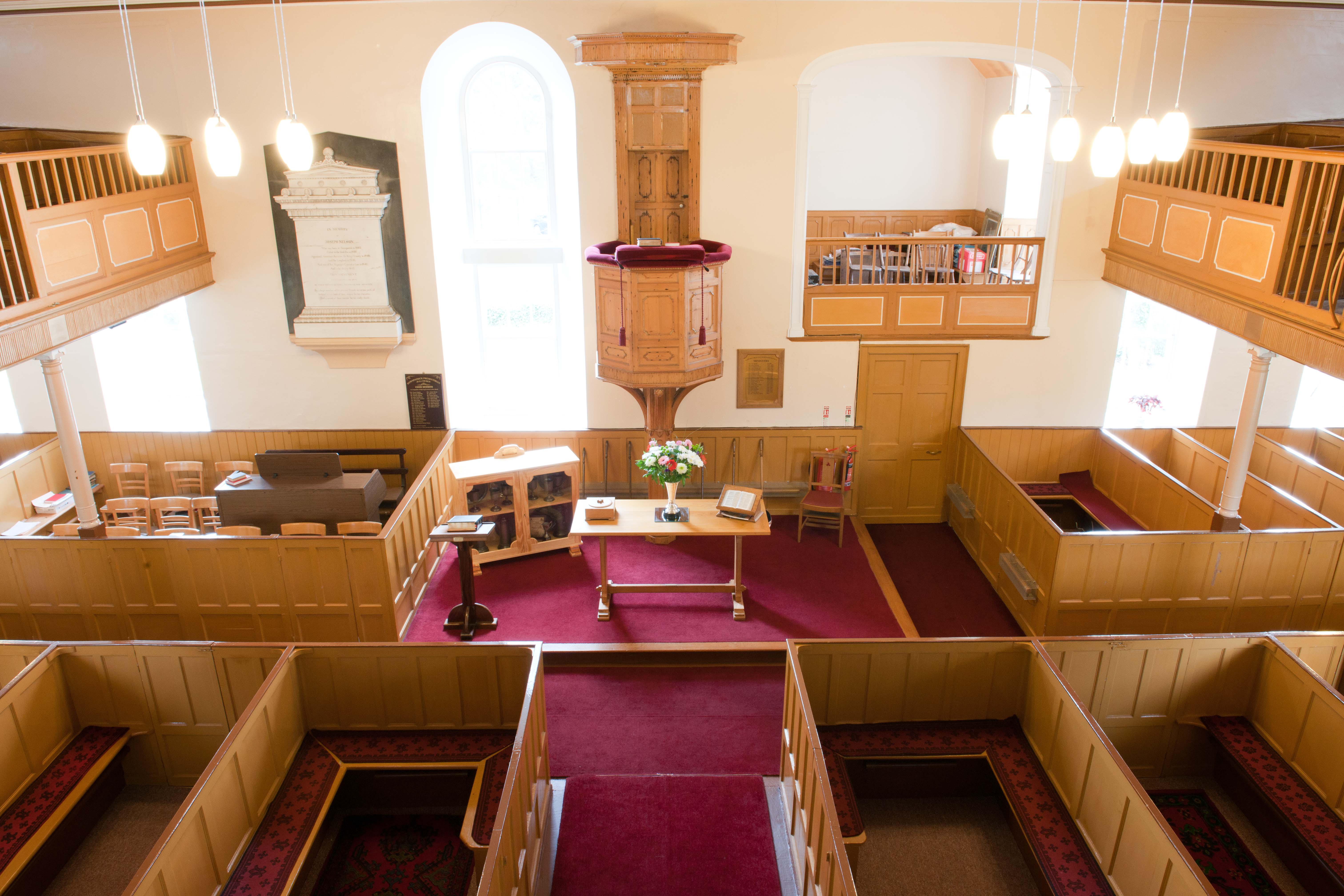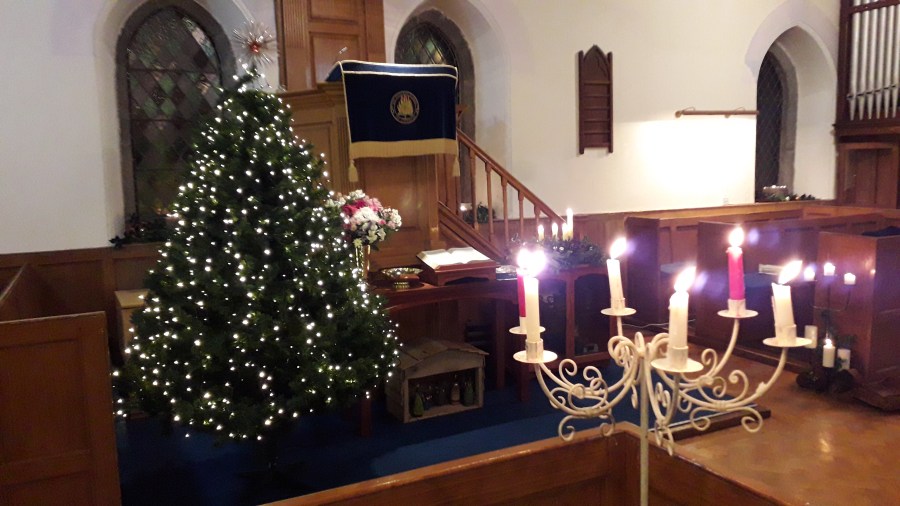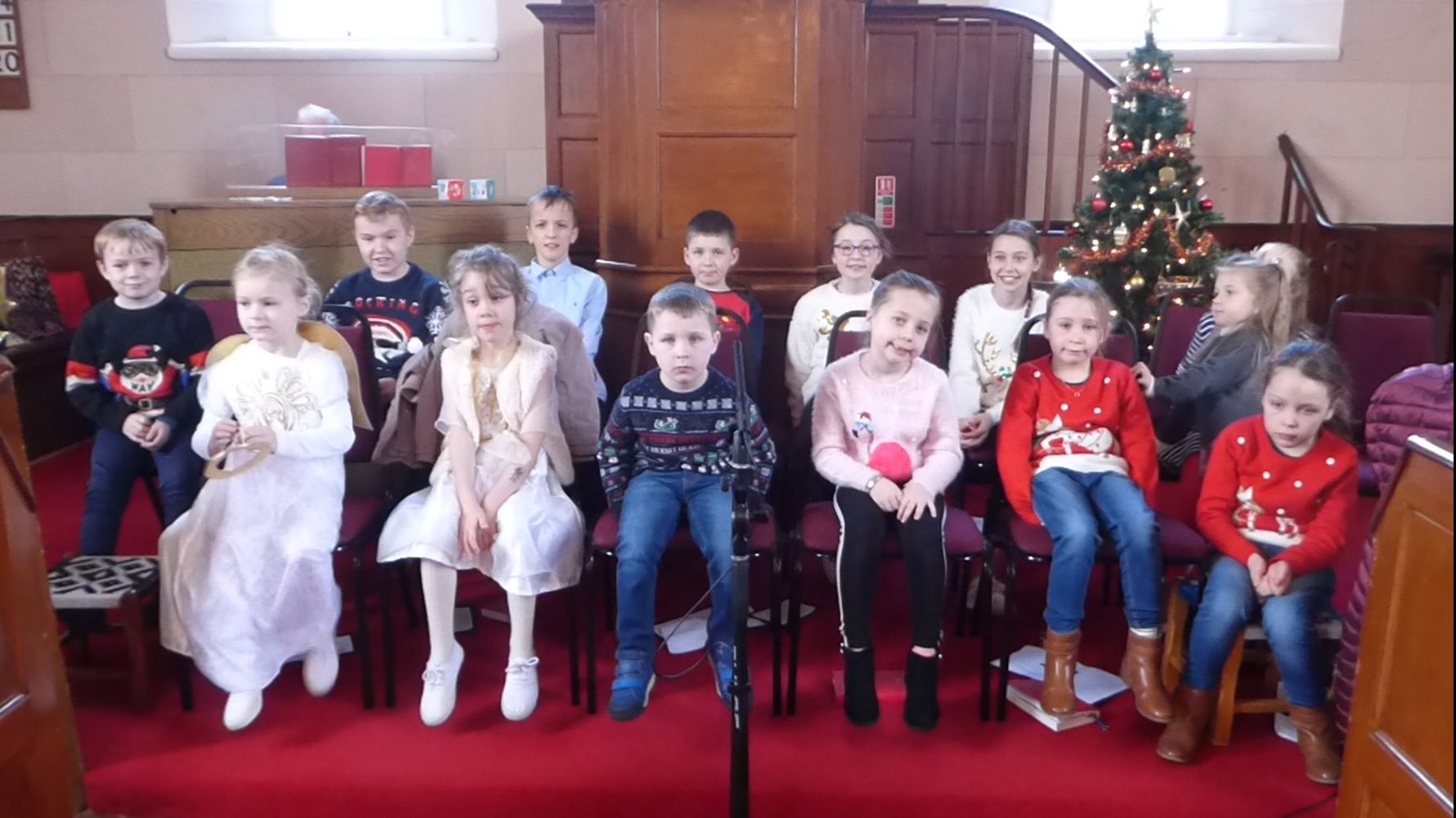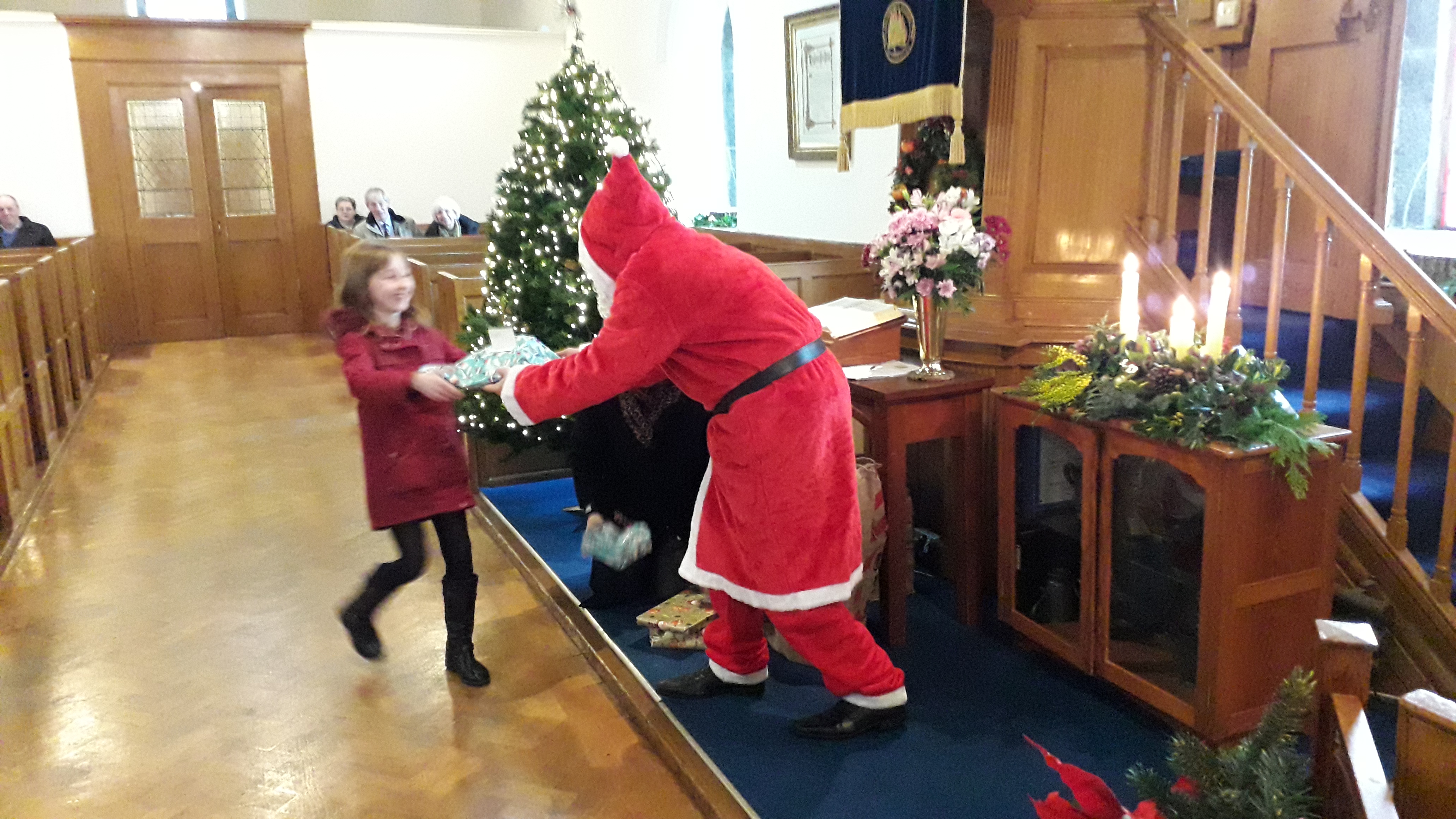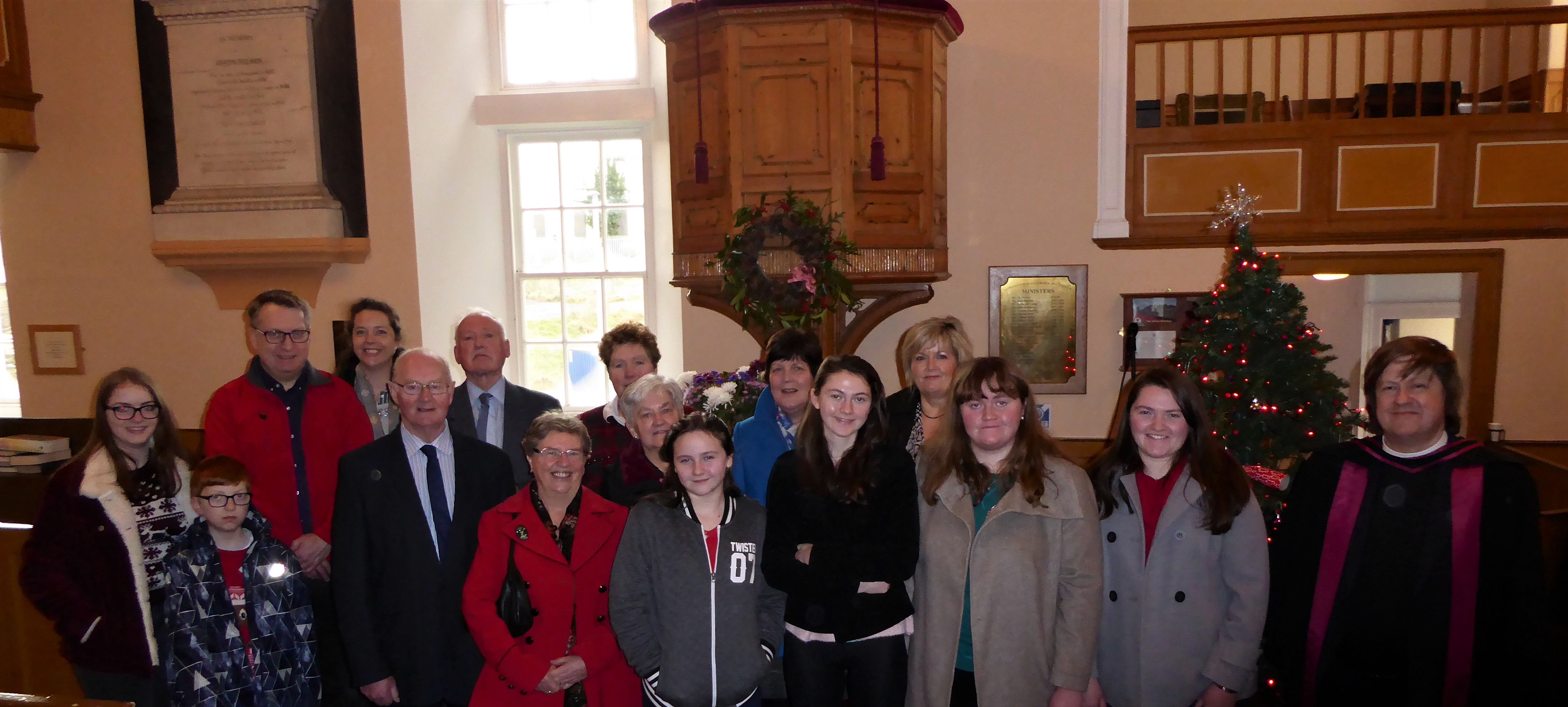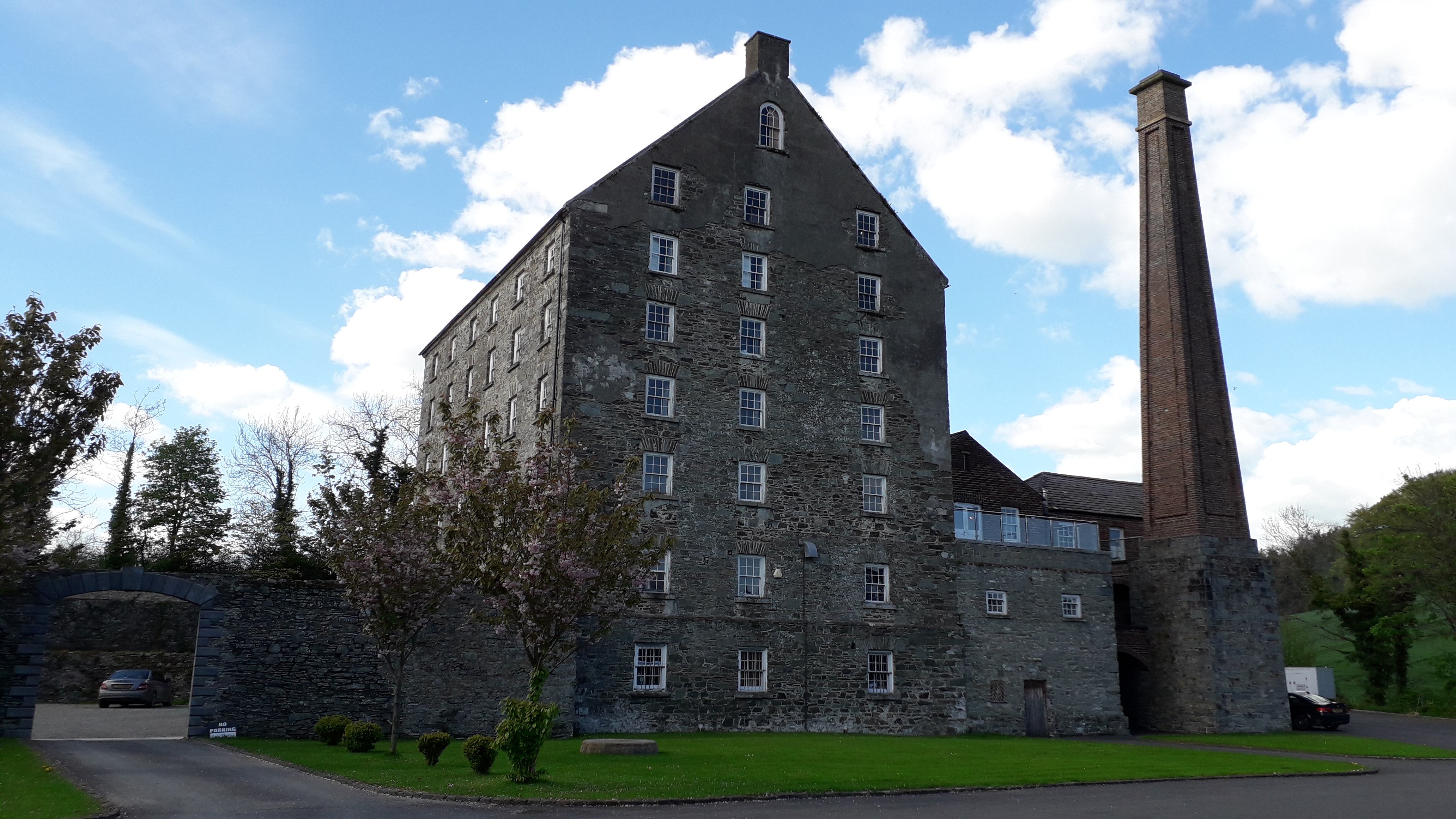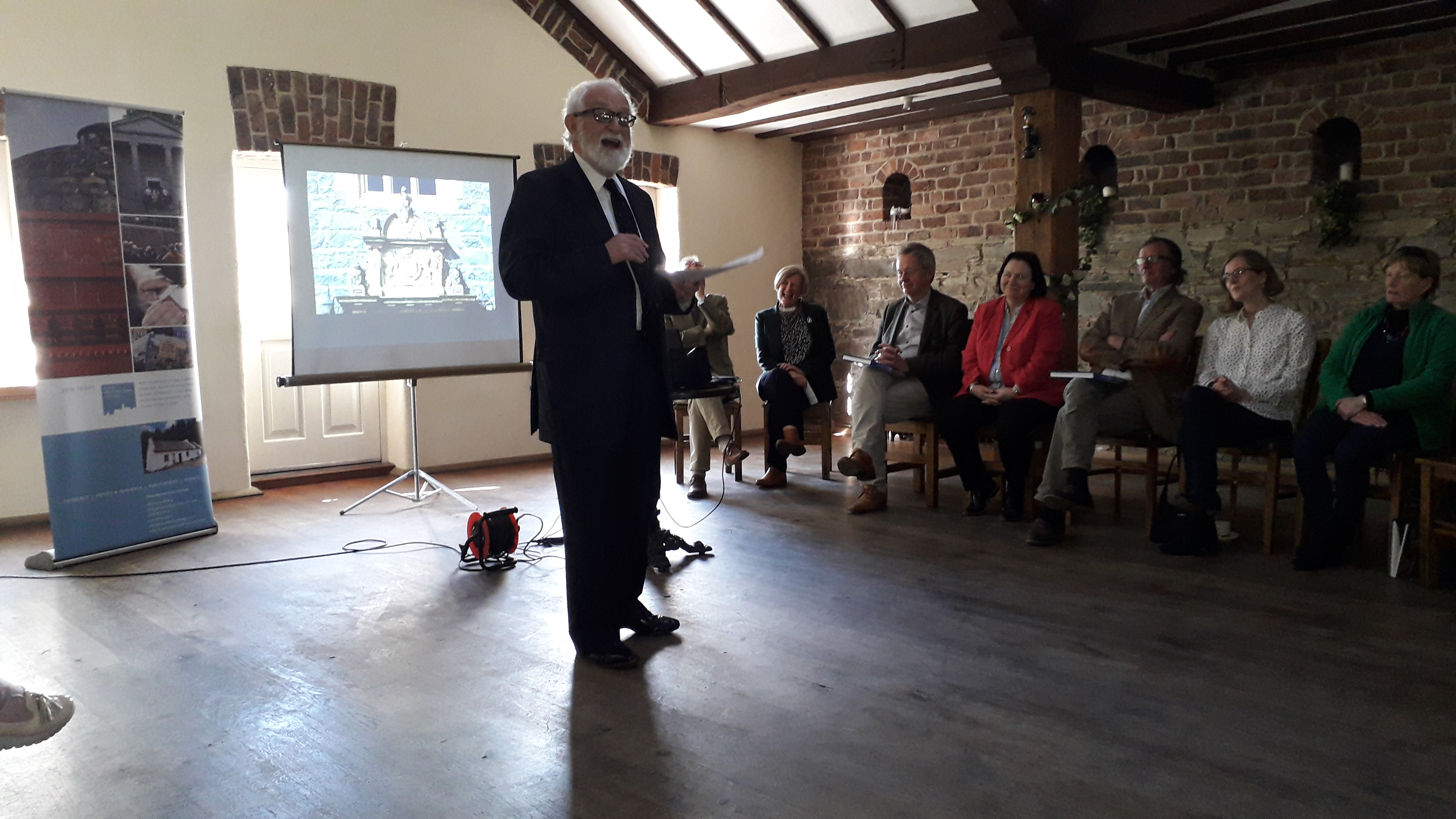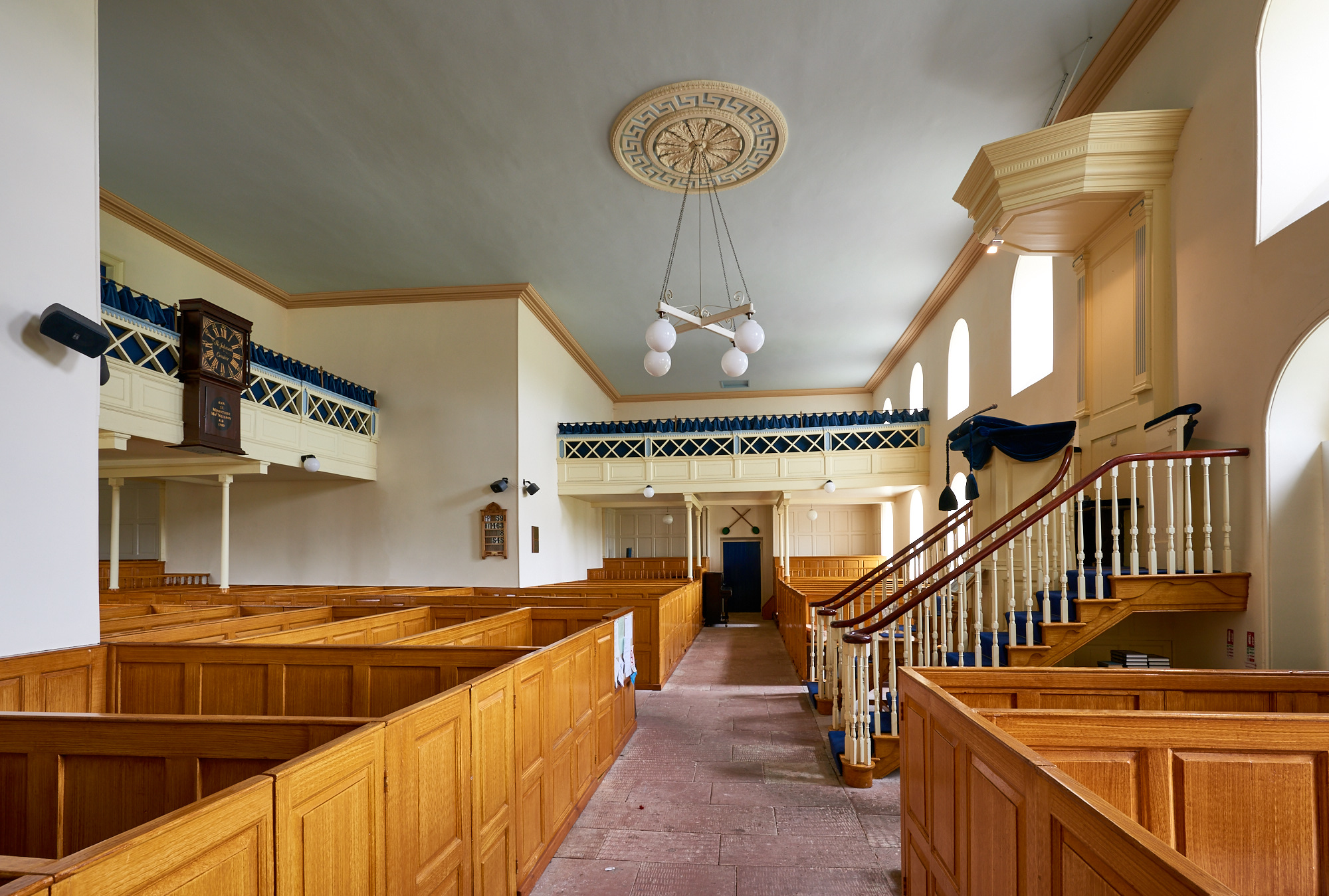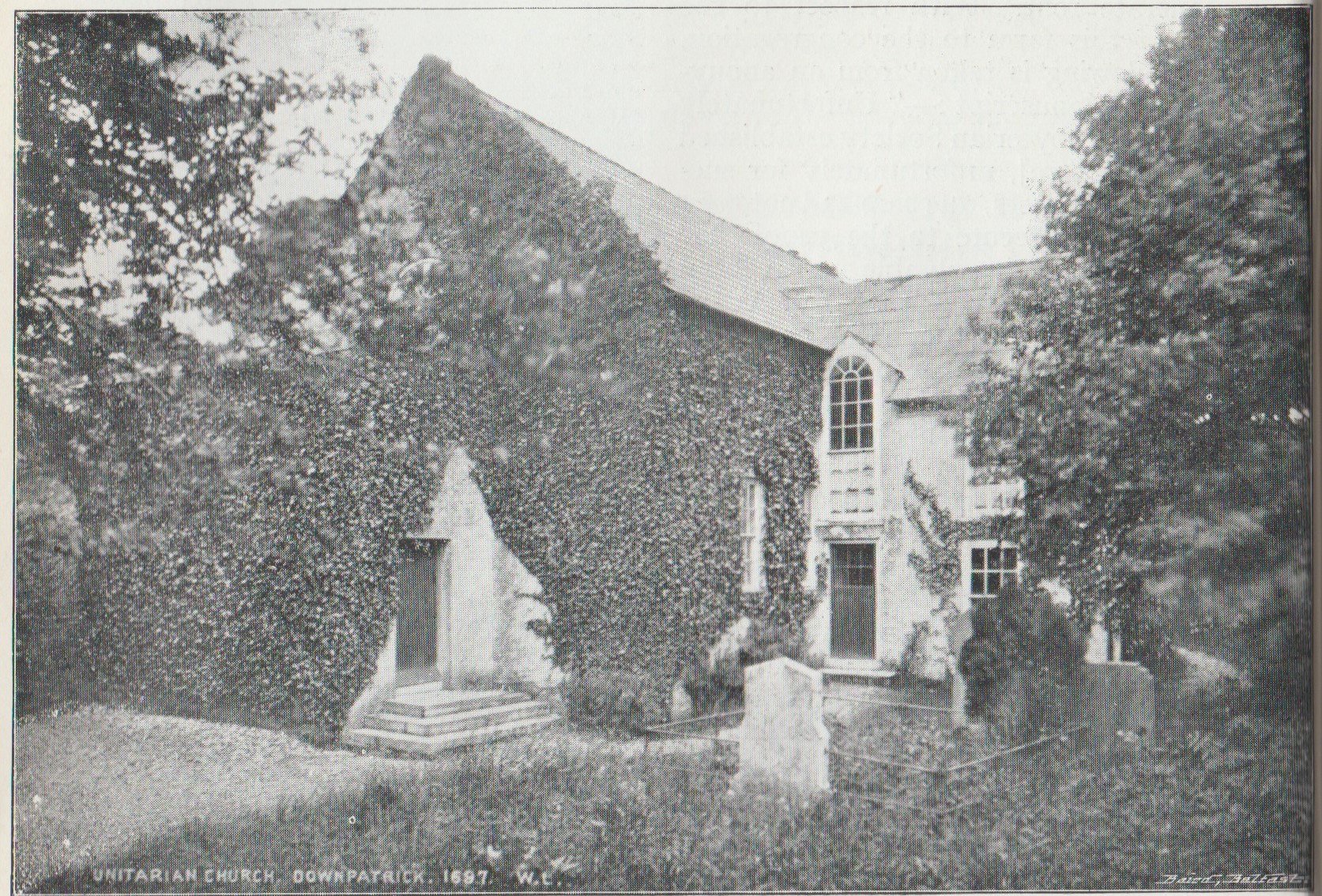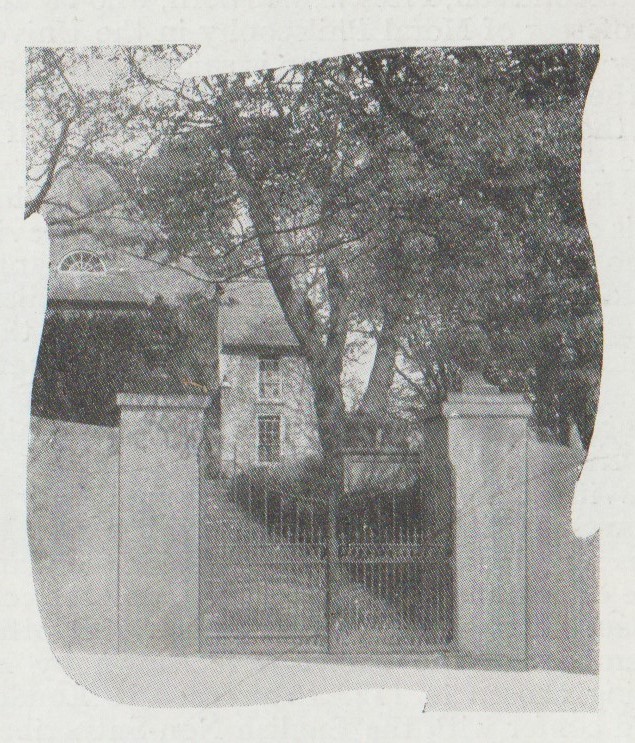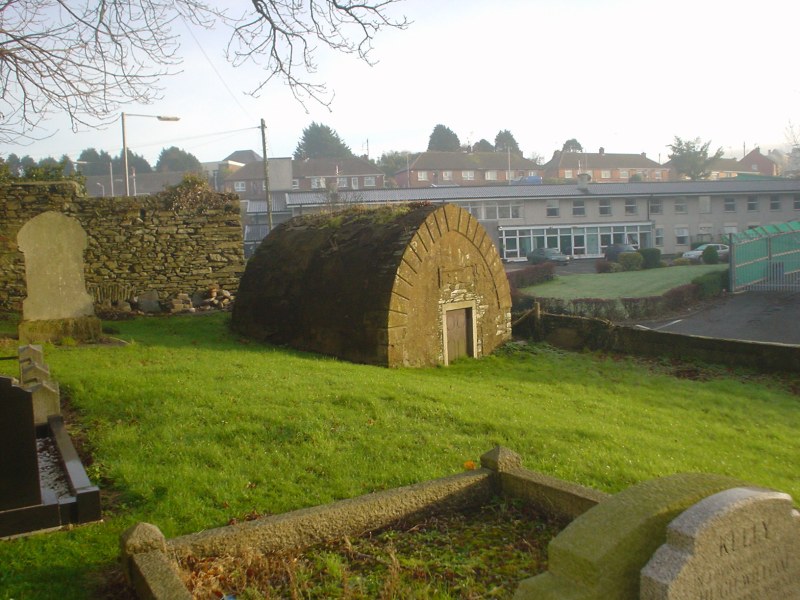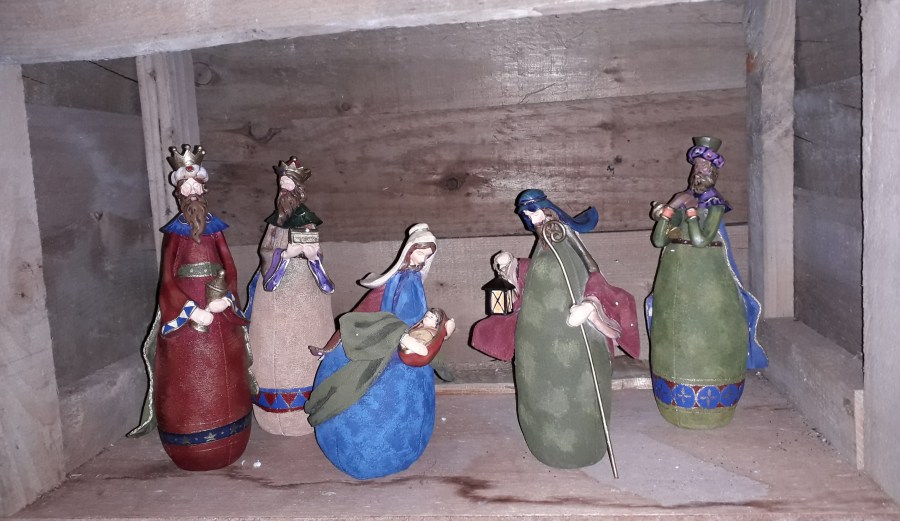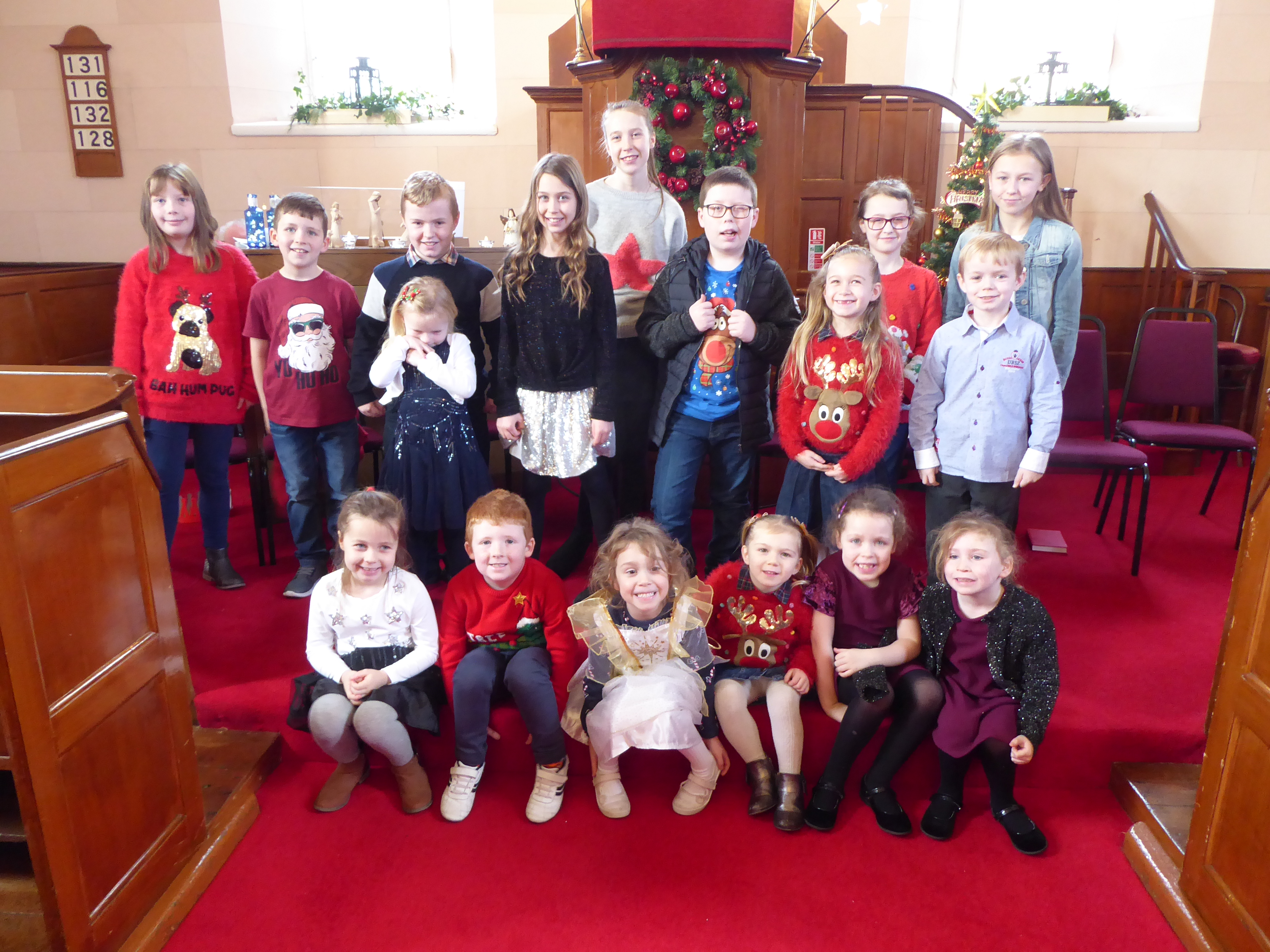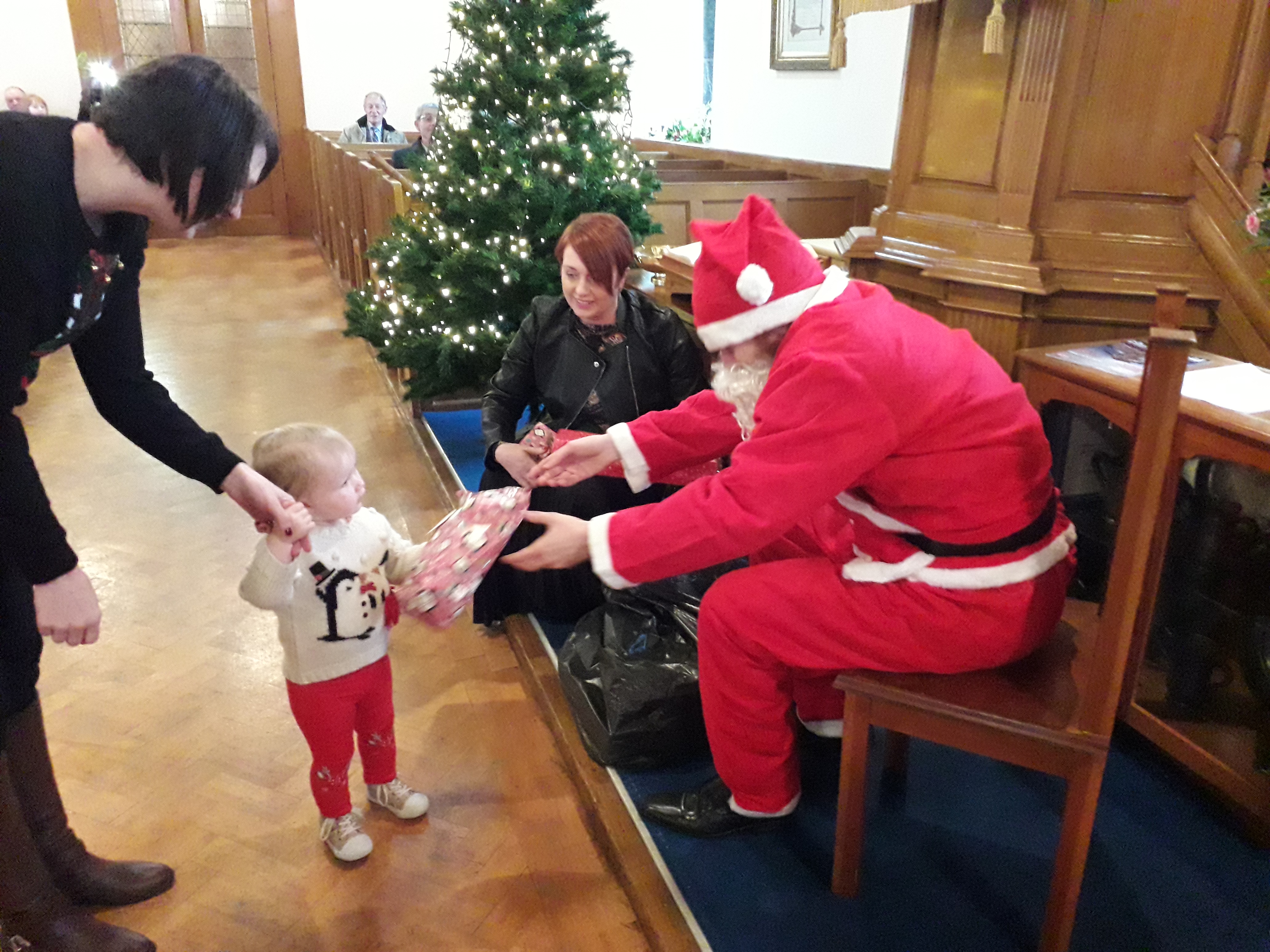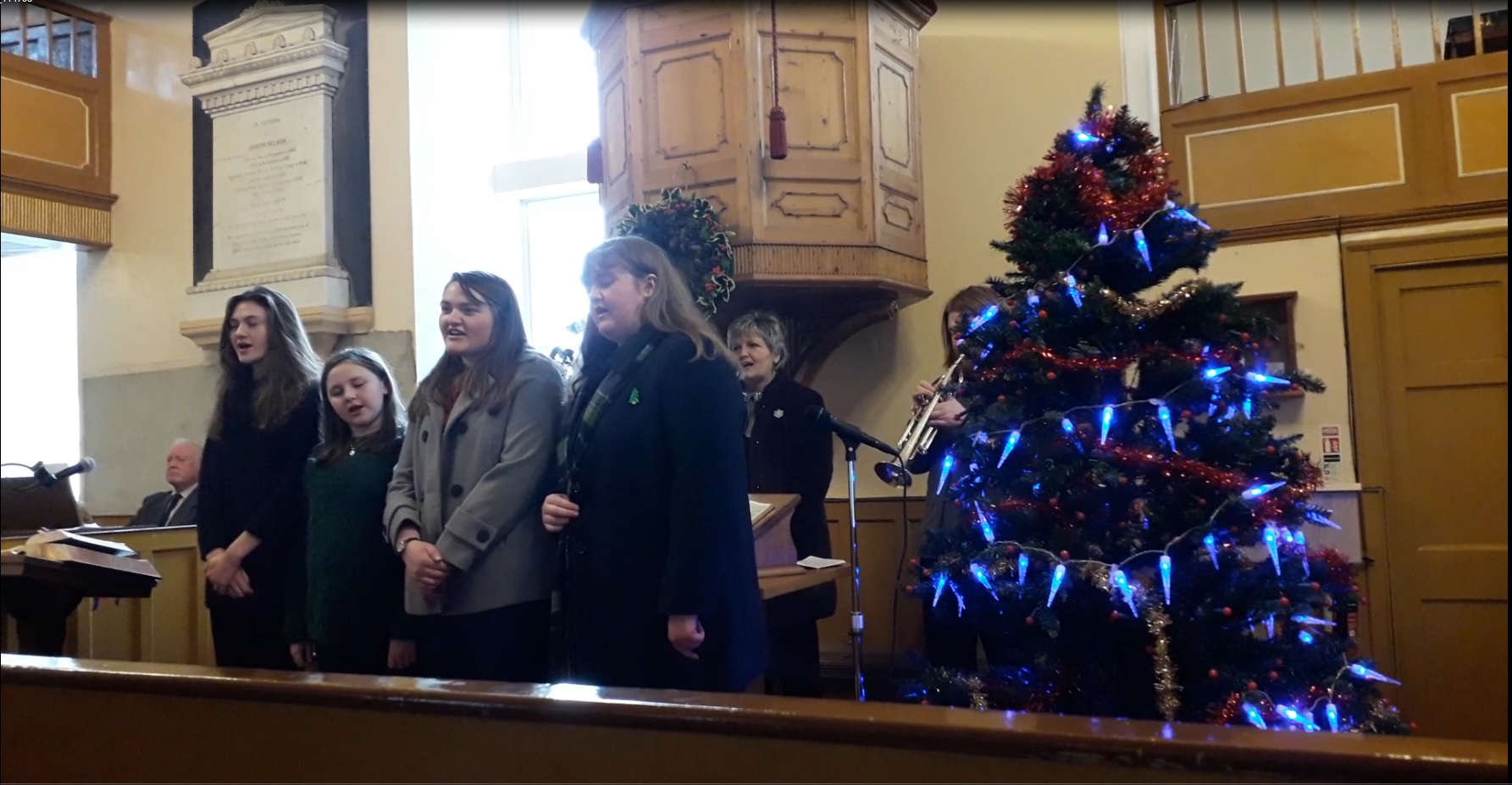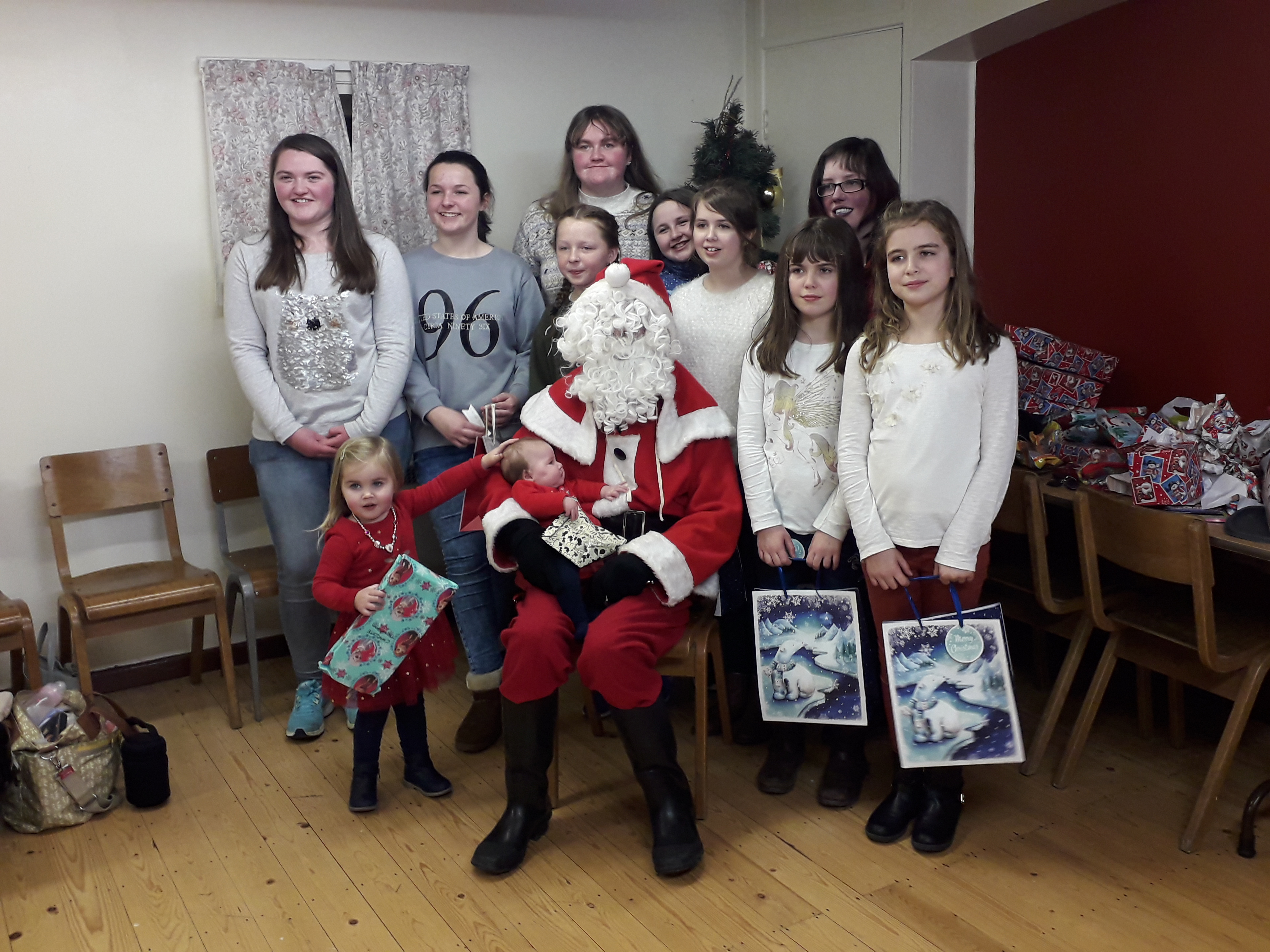The three Non-Subscribing Presbyterian churches of Downpatrick, Ballee and Clough each possess interesting graveyards housing the last resting places of centuries of church members, including many notable figures. The graveyards are remarkable too for the wide variety of tombs, stones and other memorials. Of especial note are the mausolea mostly dating from the late eighteenth or early nineteenth centuries.
Downpatrick has a large number of what Professor James Stevens Curl describes (in Mausolea in Ulster, Ulster Architectural Heritage Society, 1978) as being of ‘the barrel-vaulted variety, rather like a Nissen-hut’. These type of tombs appear to be local to the Downpatrick area, there are other examples in the locality but the Non-Subscribing Presbyterian Church on Stream Street has the largest number of examples of them, tombs built by local merchants including the Potter, Morrison, Quail, Rowan and Gordon families. The Quail tomb is dated 1800. The Morrison family tomb is located in the graveyard exactly opposite the house on Stream Street where the family then lived, so every day they gazed out of the window at a rather stark reminder of their own mortality.
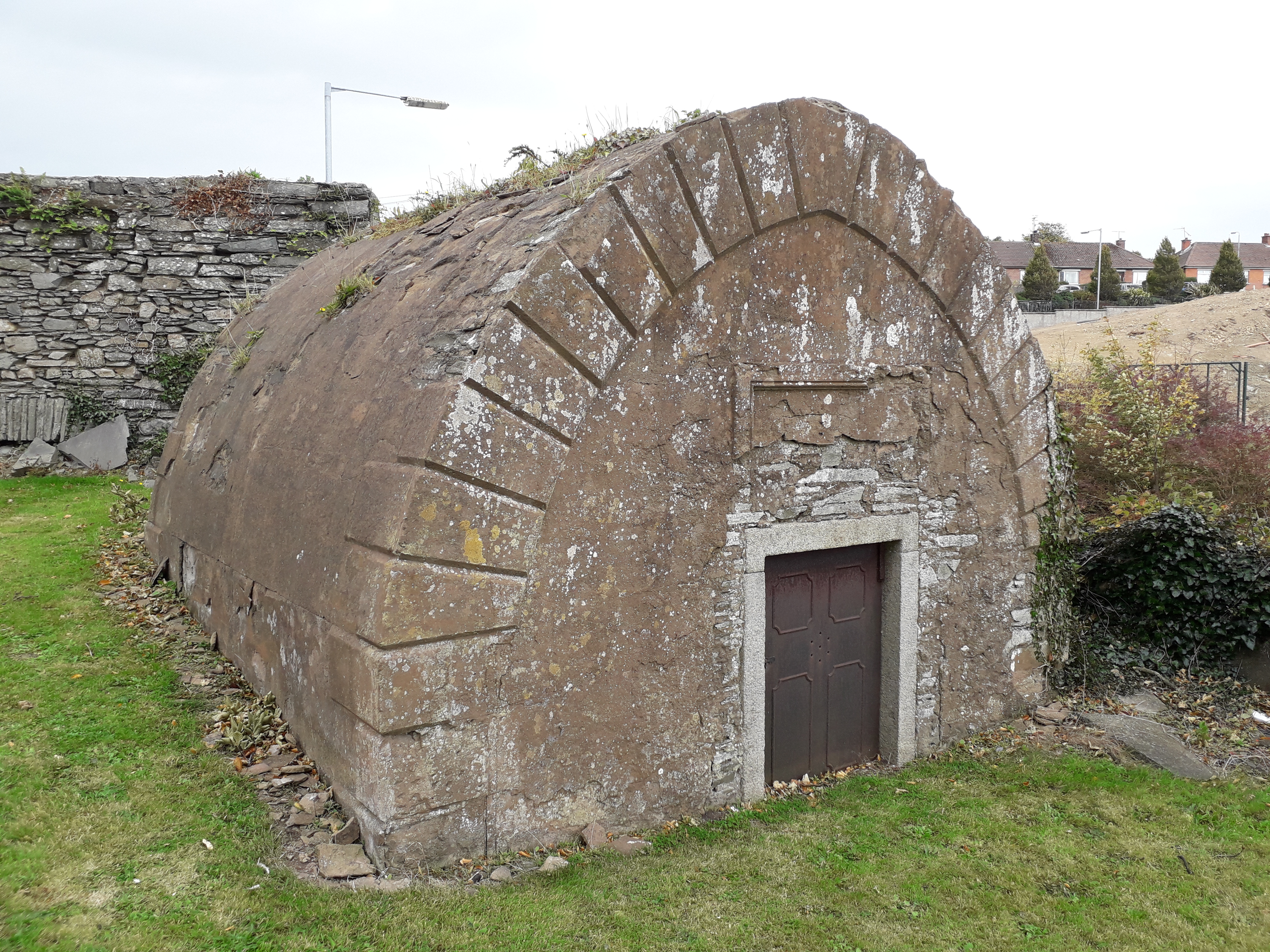
Downpatrick tomb, possibly that of the Potter family

Quail family tomb
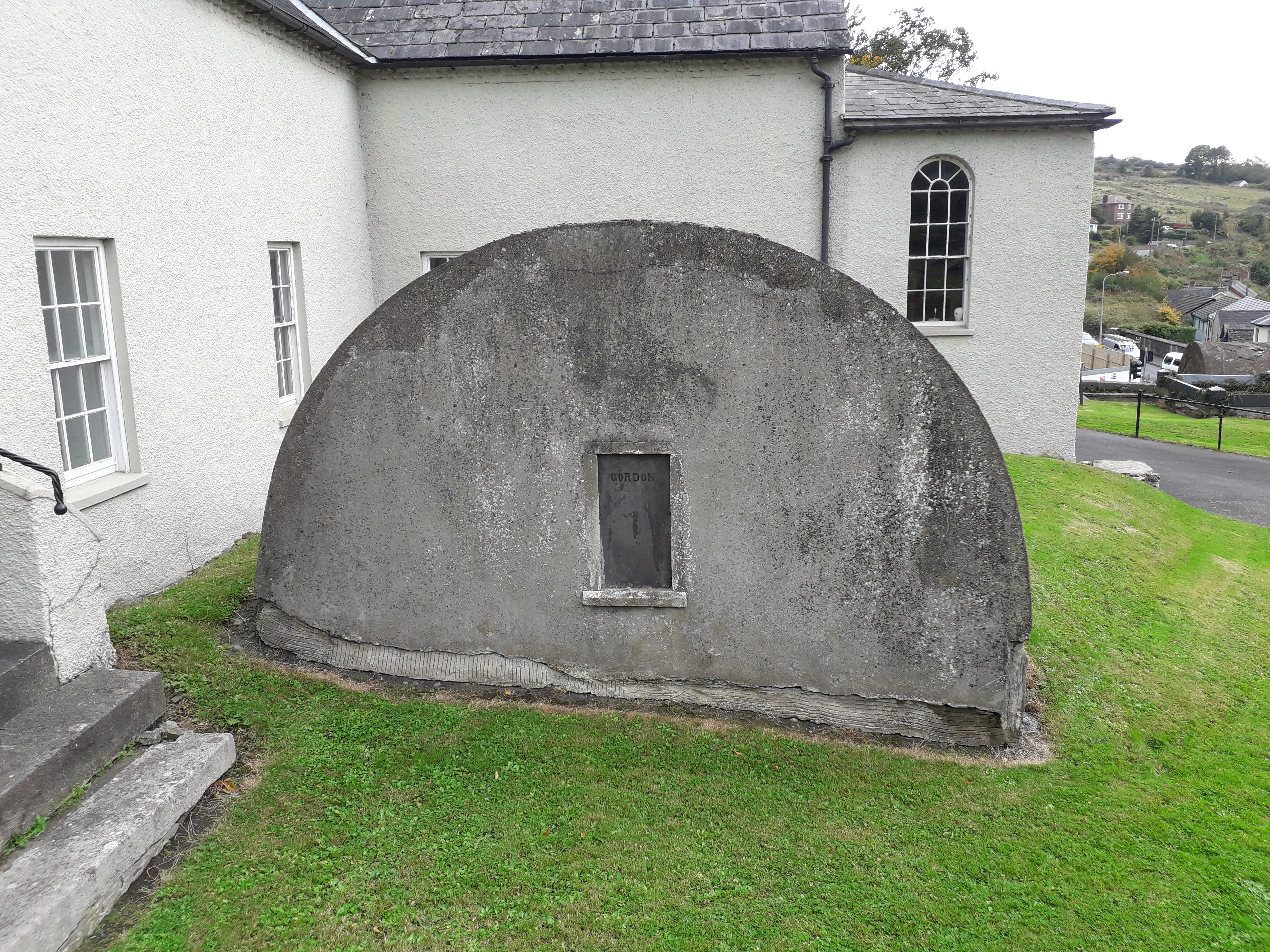
Gordon family tomb

Morrison family tomb opposite their residence
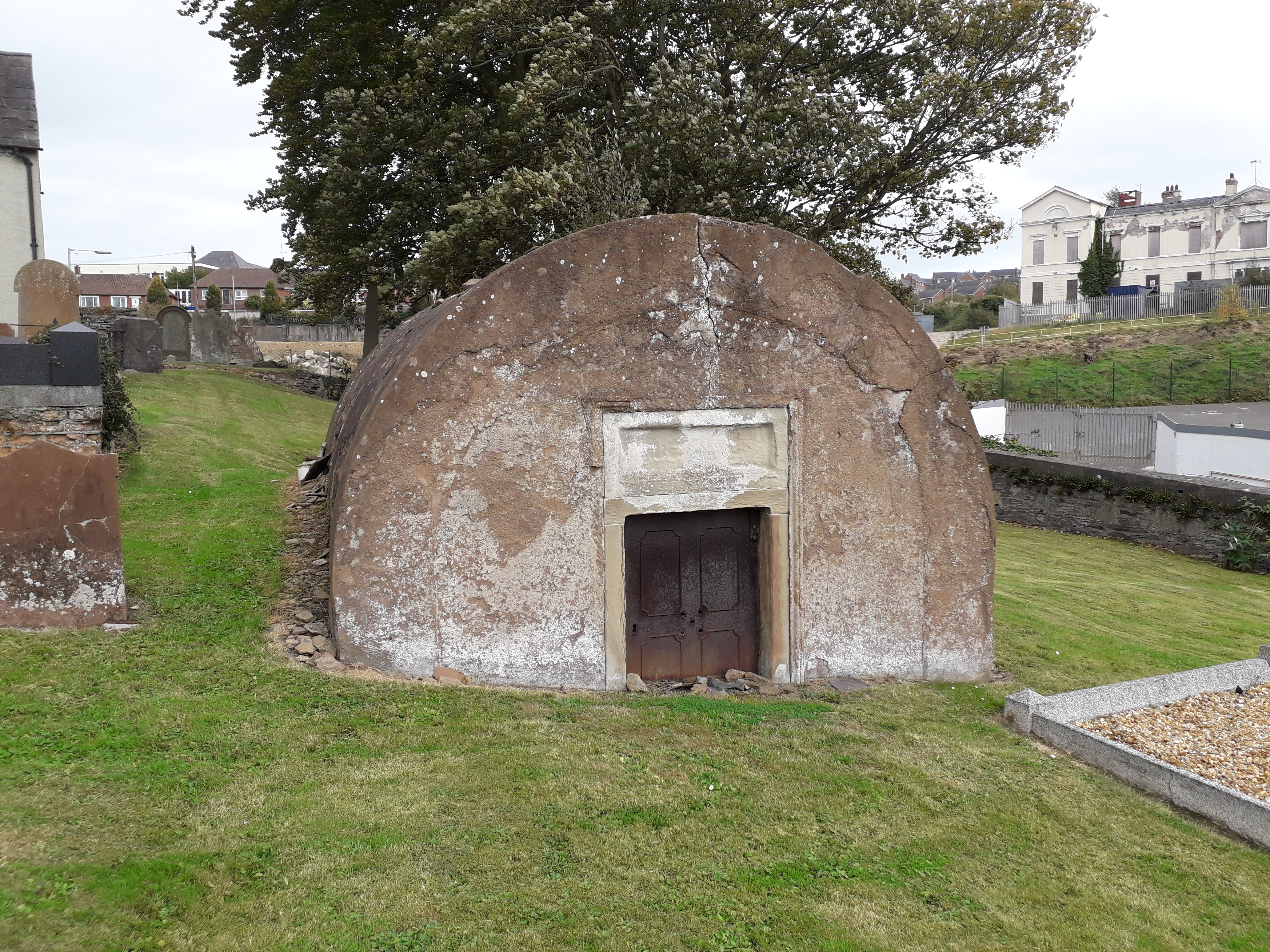
Downpatrick tomb, inscription not legible
There is another example of such a tomb at Ballee.

Side view of the tomb at Ballee
Of particular interest to architectural historians are the two tombs at Downpatrick described by Professor Curl as consisting:
of square bases, with panelled sides, surmounted by pyramids having concave sides derived from early mausolea in the Kedron Valley, Jerusalem.
The link with the Kedron Valley is particularly intriguing.

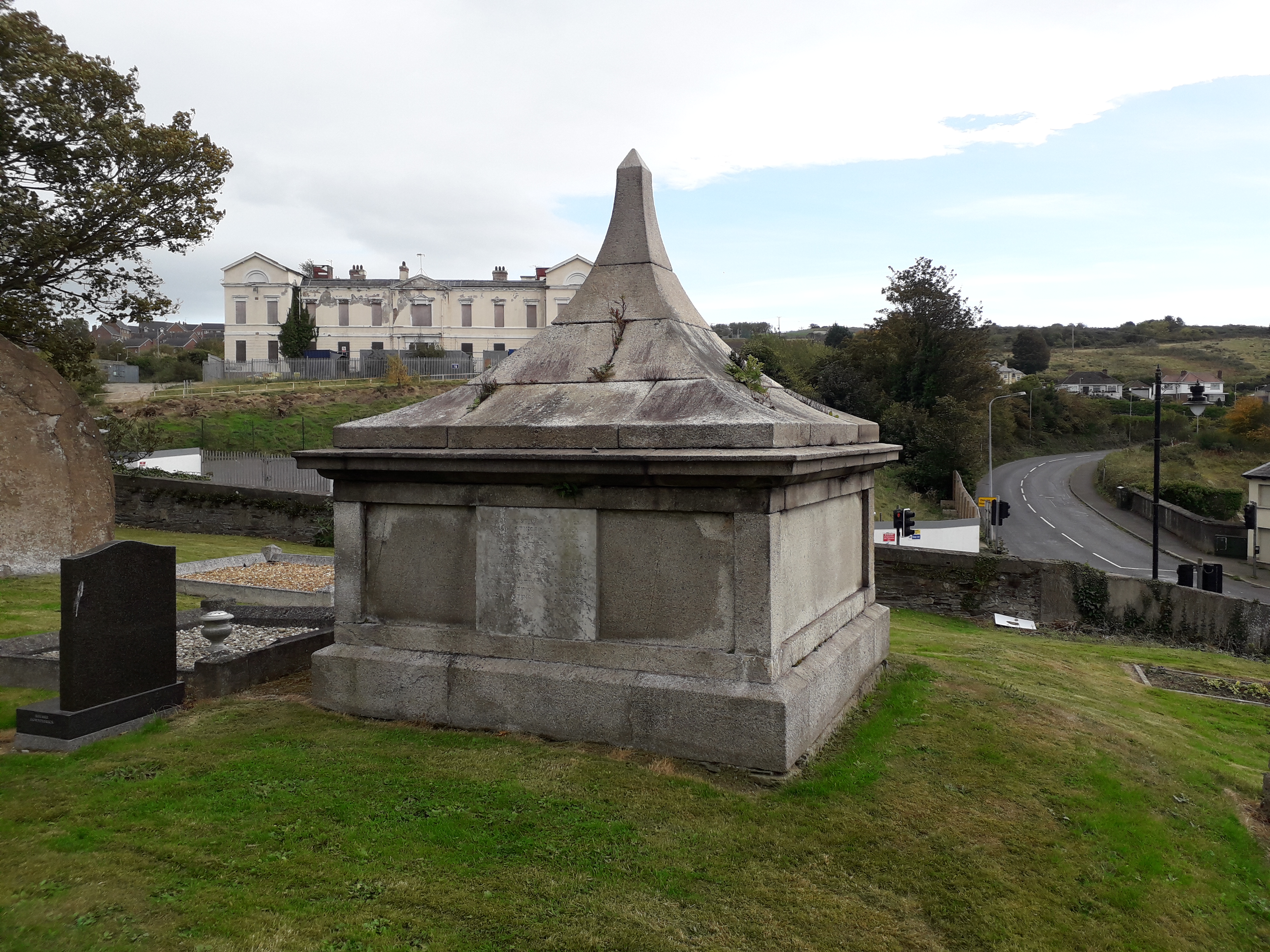
The two concave tombs at Downpatrick ‘derived from early mausolea in the Kedron Valley, Jerusalem’
But by far the grandest tomb is to be found at Clough. Professor Curl describes it as:
A work of Victorial funerary architecture in full bloom…The grand ‘Order’ of consoles instead of pilasters or columns; the massive vermiculated rustication of the entrance; the shrouded urns; and the remnants of neoclassical form give an indication of the ‘fat atmosphere’ of funerals so typical of opulent burial in the nineteenth century…The funeral pomp of the Murland mausoleum at Clough is something one might expect to find in the cemetery of Père-Lachaise or in one of the great American cemeteries, rather than in a small rural churchyard in the shadow of the Mountains of Mourne.
The Murland family were local mill owners and members of the church at Clough. The Memorial at Clough is now in need of conservation and the Follies Trust is hoping to tackle this in forthcoming months. On Wednesday, 13th March 2019 there will be a public lecture at Clough Non-Subscribing Presbyterian Church at 7.30 pm by Dr Finbar McCormick on the topic of ‘Mausolea & Memorials to the dead in Ireland’. Everyone is welcome and the talk will be followed by refreshments.
Dr McCormick is a senior lecturer in the School of the Natural and Built Environment at Queen’s University, Belfast and former Chair of the Discovery Programme. The Follies Trust writes:
The talk will look at the history and development of memorials to the dead in Ireland and beyond. It will show how the Reformation changed people’s attitude to commemorating the dead and will demonstrate how Presbyterianism in Scotland played such an important role in the development of the modern mausoleum. Dr McCormick will also show how classical ideas had such an influence on mausoleum design as can be seen in the magnificent Murland mausoleum at Clough. The Ulster Architectural Heritage Society list describes the mausoleum as ‘the phenomenal Murland vault of about 1860, furnished with all the pompe funebre of the classical manner, with trimmings.’ It was designed by Thomas Turner and is a fine example of the genre.
The Follies Trust leaflet contains illustrations of the tomb and information on how to make a donation to the project if you wish. It can be downloaded from this link:
Follies Mausoleum Flyer
